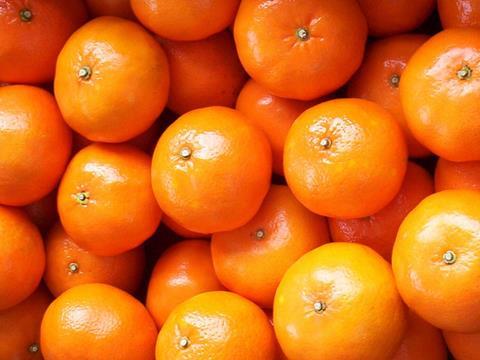
What are your expectations for this citrus season? What volumes are you predicting?
Inmaculada Sanfeliu (IS): The 2017-18 Spanish crop is expected to weigh in at 6.2 million tonnes, a fall of 12.3 per cent on last season, with 3.14m tonnes coming from Valencia, 2.02m tonnes from Andalucía and 864,000 tonnes from Murcia. The remainder will come from Tarragona and the Balearic Islands. By category, we expect mandarin production to fall by 18.4 per cent, while oranges and lemons are down by 11.1 per cent and 2.8 per cent respectively.
Even though volumes are down, there’s no reason why this should translate into a drop in exports. During the 2016-17 season Spain exported 3.705m tonnes of citrus, 95,000 tonnes more than in the previous campaign. This was in spite of the heavy losses sustained in December as a result of the rains, particularly in Clementines in the province of Castellón. Although the final shipment total could have been higher, last year still turned out to be the fifth best export season ever.
So for the current season we are confident that exports will exceed last year’s total of 3.65m tonnes. This includes 1.5m tonnes of mandarins, 1.6m tonnes of oranges, 500,000 tonnes of lemons and 60,000 tonnes of grapefruit – more than enough to meet the requirements of the European retailers.
How have recent growing conditions been?
IS: The season got underway at the end of September and despite the lack of rain we’ve seen a good range of sizes so far. The first oranges of the season, Navelina, are now on sale, and we’ve just finished harvesting the early Clementine varieties. The first Clemenules are due to arrive in supermarkets shortly.
One factor that is likely to cause uncertainty during the second half of the season is the ongoing drought –the worst Spain has faced for 15 years. Unless we see sufficient rainfall between now and December, the government has said it will impose restrictions on water supplies in a number of production zones. The situation is particularly worrying for lemon producers in Murcia. Up to now however we haven’t had any sizing issues with satsumas and early Clementines and the fruit we’ve had so far has been of excellent quality.
Have there been any recent supply issues?
IS: No. Given its market share, Spain is irreplaceable as a supplier of citrus to the European Union and one shouldn’t read too much in to the fact that we’re facing a shorter crop this year. This simply means that production will be lower than last year when there was an abundant harvest. To put things in perspective, 2016-17 was the third biggest crop in history at 7.2m tonnes. As I said previously, we expect exports to exceed 3.65m tonnes this season, marking the eighth consecutive year of growth.
What market trends are you seeing in the category?
IS: For years, Spain has put a lot of effort into diversifying its varietal offer to ensure that it can supply the high quality Navel-type oranges demanded by the market for as long a period as possible. It has achieved notable success in extending the supply window with late season varieties such as Lane, Powell, Chislett and Barnfield, as well as with new types of seedless Valencia late oranges including Delta Seedless, Midknight and Barberina. Today we export premium quality oranges from November right through to May.
In easy peelers, Clementine is the preferred variety thanks to its quality and versatility and it is popular among all ages, particularly children. They now make up around 1.6m tonnes of the 2.4m tonnes of easy peelers Spain produces and each year we export more than 1m tonnes worldwide, the majority of which come from the Community of Valencia.
The market is looking for new mandarin varieties that most closely resemble the Clementine, particularly during the latter stages of the season. The trend in recent years has been towards later varieties as growers seek to distribute production more evenly in order avoid supply peaks during the first half of the season and raise the quality bar across the whole category.
Where do you see the most growth potential in citrus?
IS: The European Union, Switzerland and Norway, which together absorb 93-95 per cent of Spanish citrus exports, are very mature markets with stable demand. There is, however, potential to boost shipments to some of the EU’s newer member states where consumption is increasing in line with purchasing power and will eventually reach similar levels to other European countries. The same is true in other countries such as Ukraine and Russia, although the latter still remains closed to European produce.
Of the non-EU markets, I would say Russia is the one with the most potential due to its size and the purchasing power of its inhabitants. Before the ban came into force in August 2014 Spain had made significant inroads in this market and we believe it will continue to play an important role in terms of future exports.
China is another market with huge potential given the growth of its middle class. But unlike Russia it has its own citrus production, which means that Spanish exporters have to comply with a complex and costly phytosanitary protocol in order to access the market.
What new varieties are showing most potential?
IS: In recent years we’ve seen an unprecedented level of interest in importing foreign varieties, particularly those than can extend the season at either end. Spain is the world’s leading citrus exporter and it is vital that we allocate the necessary resources –both public and private – for the development of new varieties. When this isn’t possible we must resort to importing them. We simply cannot afford to allow our competitors to develop a richer and more competitive varietal offer than us.



